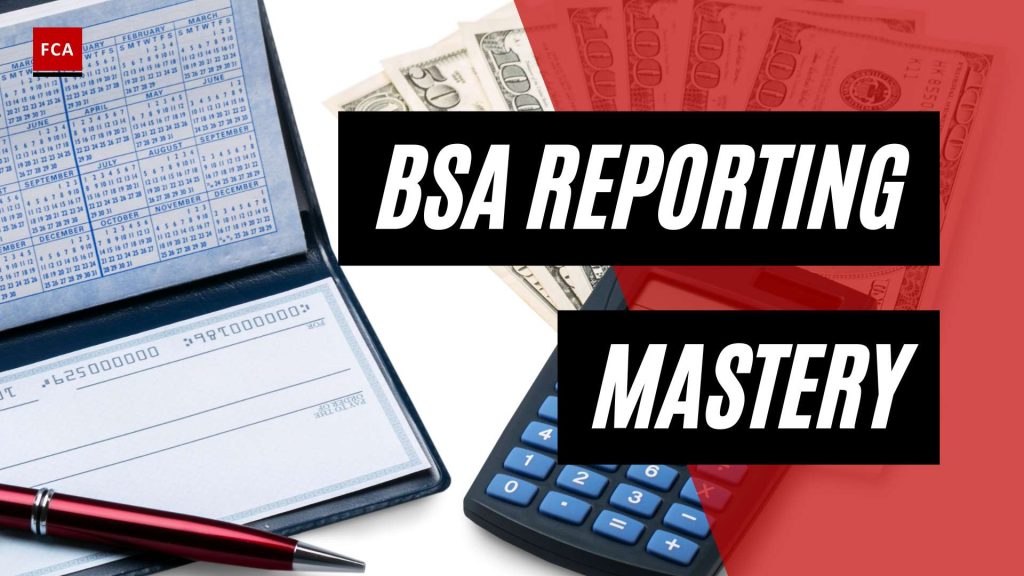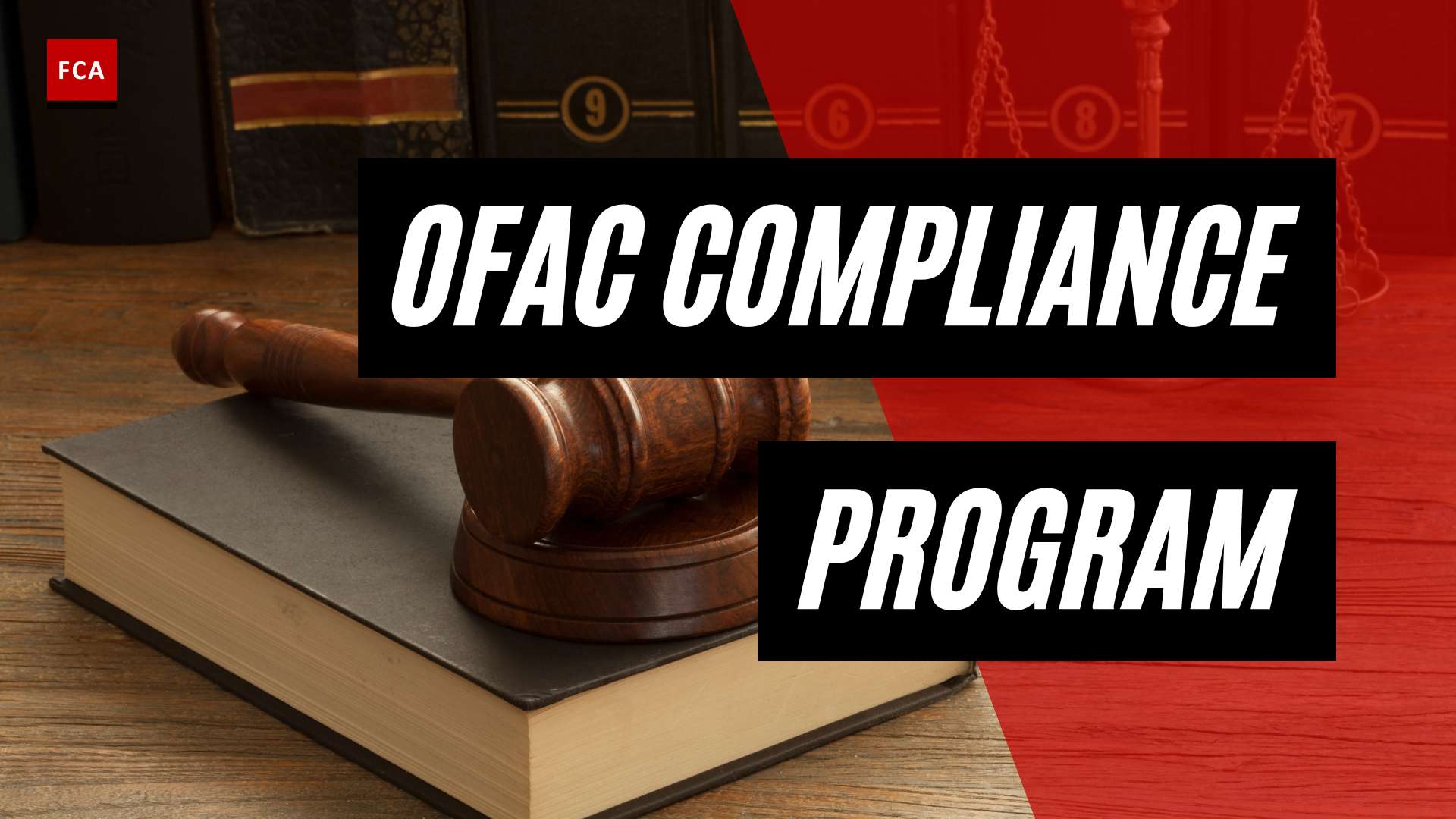The Importance of Bank Secrecy Act Reporting Obligations
To ensure the integrity of the financial system and combat illicit activities, financial institutions are subject to various reporting obligations under the Bank Secrecy Act (BSA). Understanding the BSA and the role of bank secrecy act reporting is crucial for professionals working in compliance, risk management, anti-money laundering, and anti-financial crime.
Understanding the Bank Secrecy Act
The Bank Secrecy Act, enacted in 1970, is a key piece of legislation aimed at preventing money laundering, terrorist financing, and other financial crimes. It sets forth a framework of regulations and requirements that financial institutions must follow to detect and report suspicious activities. The BSA is administered and enforced by the Financial Crimes Enforcement Network (FinCEN), a bureau of the U.S. Department of the Treasury.
The BSA requires financial institutions, including banks, credit unions, and money services businesses, to establish effective anti-money laundering (AML) programs to detect and deter illicit financial activities. These programs must include various components, such as customer due diligence, transaction monitoring, and reporting suspicious activities.
The Role of Bank Secrecy Act Reporting
Bank Secrecy Act reporting plays a critical role in the fight against financial crimes. Financial institutions are required to submit reports to FinCEN to provide valuable information that can help law enforcement agencies identify and investigate potential money laundering and terrorist financing activities. There are three key types of reports mandated by the BSA:
-
Currency Transaction Reports (CTRs): Financial institutions must file CTRs for cash transactions exceeding $10,000 in a single business day. CTRs provide a record of large cash transactions and help authorities track the movement of funds that may be associated with illicit activities. For more information on currency transaction reporting requirements, refer to our article on currency transaction reporting requirements.
-
Suspicious Activity Reports (SARs): Financial institutions are required to file SARs when they detect transactions or activities that may indicate potential money laundering, terrorist financing, or other suspicious behavior. SARs are crucial in providing actionable intelligence to law enforcement agencies, enabling them to investigate and disrupt criminal activities. The reporting threshold for SARs is lower than that for CTRs, allowing institutions to report suspicious activities even if they do not involve large amounts of money.
-
Foreign Bank and Financial Accounts (FBAR): U.S. persons with financial interest or signature authority over foreign bank and financial accounts must file an FBAR annually to report these accounts to the Internal Revenue Service (IRS). FBAR helps the IRS track offshore assets and income, combating tax evasion and other financial crimes.
By complying with these reporting obligations, financial institutions contribute to the overall effort to safeguard the financial system from abuse and protect the integrity of the economy.
In the next sections, we will explore key reporting obligations in more detail, delve into the compliance framework surrounding the BSA, discuss challenges and best practices, and examine the consequences of non-compliance.
Key Reporting Obligations
To ensure the integrity of the financial system and combat illicit activities, financial institutions in the United States have specific reporting obligations under the Bank Secrecy Act (BSA). These reporting obligations help detect and prevent money laundering, terrorist financing, and other financial crimes. Let’s explore three key reporting obligations under the BSA: Currency Transaction Reports (CTRs), Suspicious Activity Reports (SARs), and Foreign Bank and Financial Accounts (FBAR).
Currency Transaction Reports (CTRs)
Currency Transaction Reports (CTRs) are a crucial component of the BSA reporting framework. Financial institutions are required to file a CTR for any cash transaction exceeding $10,000 in a single business day. This includes deposits, withdrawals, exchanges, or transfers involving currency. The goal of CTRs is to monitor large cash transactions, as they can be indicative of illicit activities such as money laundering.
Financial institutions must collect and report specific information in CTRs, including the customer’s identity, the source of funds, and the purpose of the transaction. This information helps law enforcement agencies track and investigate suspicious financial activities. For more information on currency transaction reporting requirements, refer to our article on currency transaction reporting requirements.
Suspicious Activity Reports (SARs)
Financial institutions play a crucial role in identifying and reporting suspicious activities that may indicate potential money laundering or other illicit financial transactions. Suspicious Activity Reports (SARs) are filed when a financial institution suspects that a transaction or pattern of transactions is suspicious or involves illegal activities.
SARs are not limited to cash transactions and can include activities such as structuring transactions to avoid reporting requirements, unusual wire transfers, or transactions involving illicit funds. It’s important for institutions to have robust monitoring systems in place to identify potentially suspicious activities and to file SARs promptly when necessary.
Filing a SAR triggers an investigation by law enforcement agencies, who rely on these reports to uncover and disrupt criminal activities. To learn more about detecting and reporting suspicious activities, refer to our article on suspicious activity reporting.
Foreign Bank and Financial Accounts (FBAR)
In addition to domestic reporting requirements, the BSA also imposes reporting obligations on U.S. persons who hold financial accounts outside of the United States. This requirement is known as the Foreign Bank and Financial Accounts (FBAR) reporting.
U.S. persons, including citizens, residents, and certain entities, must file an FBAR if they have a financial interest in or signature authority over one or more foreign financial accounts, and the aggregate value of these accounts exceeds $10,000 at any time during the calendar year. The report is filed with the Financial Crimes Enforcement Network (FinCEN) separately from tax returns.
FBAR reporting ensures transparency and helps prevent individuals from using offshore accounts to evade taxes or engage in illicit financial activities. For more information on FBAR reporting, please refer to our article on FBAR reporting.
By complying with these key reporting obligations, financial institutions and individuals contribute to a more secure and transparent financial system. It is essential to stay up-to-date with regulatory changes and ensure proper reporting to mitigate the risks associated with non-compliance.
Compliance Framework
To effectively meet bank secrecy act reporting obligations, financial institutions must establish a robust compliance framework. This framework should include designing an effective compliance program, providing training and education for staff, and implementing internal controls and monitoring mechanisms.
Designing an Effective Compliance Program
Designing an effective compliance program lays the foundation for meeting bank secrecy act reporting obligations. This program should be tailored to the specific needs and risks faced by the financial institution. Key elements of an effective compliance program include:
-
Written Policies and Procedures: Developing comprehensive written policies and procedures that outline the institution’s approach to meeting reporting obligations. These policies should address the identification and reporting of suspicious activity, currency transactions, and foreign bank accounts.
-
Risk Assessment: Conducting a thorough risk assessment to identify and understand the institution’s exposure to money laundering, terrorist financing, and other illicit activities. This assessment helps determine the level of due diligence required for customer onboarding and ongoing monitoring.
-
Customer Due Diligence (CDD): Implementing robust CDD procedures to verify the identities of customers and understand the nature of their business relationships. This includes conducting enhanced due diligence for high-risk customers, as required by the USA PATRIOT Act Customer Identification Program.
-
Recordkeeping: Establishing procedures for maintaining accurate and up-to-date records of customer transactions, as well as any suspicious activity reports (SARs) filed.
-
Independent Testing and Audits: Conducting regular independent testing and audits to assess the effectiveness of the compliance program and identify areas for improvement.
Training and Education for Staff
Training and education are crucial components of a successful compliance program. Financial institutions must ensure that their staff, including employees and relevant third parties, receive proper training on bank secrecy act reporting obligations and related regulations. Training programs should cover:
-
AML Policies and Procedures: Educating staff on the institution’s AML policies and procedures to ensure they understand their roles and responsibilities in meeting reporting obligations.
-
Detection and Reporting of Suspicious Activity: Providing training on recognizing and reporting suspicious activity in accordance with the FINCEN regulations and guidance. This includes understanding the red flags associated with money laundering, terrorist financing, and other illicit activities.
-
Currency Transaction Reporting Requirements: Familiarizing staff with the requirements for filing Currency Transaction Reports (CTRs) and ensuring they know the thresholds and reporting procedures. For more information on currency transaction reporting, refer to our article on currency transaction reporting requirements.
-
Enhanced Due Diligence: Training staff on conducting enhanced due diligence for high-risk customers, as it is a critical component of meeting reporting obligations. This includes understanding the risk-based approach to AML compliance and the importance of ongoing monitoring. Learn more about this in our article on enhanced due diligence for high-risk customers.
Internal Controls and Monitoring
Financial institutions should establish robust internal controls and monitoring mechanisms to ensure compliance with bank secrecy act reporting obligations. This involves:
-
Transaction Monitoring: Implementing systems and processes to monitor customer transactions for suspicious activity, ensuring prompt detection and reporting of any potential violations. AML compliance software solutions can assist in automating this process. Visit our article on AML compliance software solutions for more information.
-
Ongoing Risk Assessment: Conducting periodic risk assessments to identify changes in the institution’s risk exposure and adjust internal controls accordingly. This allows for a proactive approach to managing risks.
-
Internal Reporting and Escalation: Establishing clear channels for employees to report suspicious activity internally and ensuring that such reports are promptly escalated to the appropriate personnel for further investigation and potential filing of SARs.
By implementing these elements within the compliance framework, financial institutions can establish a solid foundation for meeting bank secrecy act reporting obligations. This helps ensure the institution’s compliance with regulations, mitigates the risk of financial crime, and maintains the integrity of the financial system.
Challenges and Best Practices
Ensuring compliance with bank secrecy act reporting obligations comes with its fair share of challenges. However, by implementing best practices and staying up-to-date with regulatory changes, financial institutions can navigate these challenges effectively.
Common Challenges in Reporting Obligations
-
Data Management: One of the common challenges in meeting reporting obligations is the effective management of data. Financial institutions must ensure the accuracy, completeness, and timeliness of the information they collect for reporting purposes. Implementing robust data management systems and processes can help mitigate this challenge.
-
Identification of Suspicious Activity: Recognizing suspicious activity can be a daunting task. Financial institutions need to have well-defined processes and trained staff to identify red flags that may indicate money laundering or other financial crimes. Regular training and awareness programs on AML compliance are essential to equip staff with the knowledge and skills to detect and report suspicious transactions.
-
Resource Constraints: Adequate resources, including personnel, technology, and financial resources, are necessary to meet reporting obligations effectively. Smaller financial institutions may face challenges in allocating sufficient resources to establish and maintain a robust BSA/AML compliance program. Collaborating with external vendors or investing in AML compliance software solutions can help mitigate resource constraints.
Best Practices for Meeting Reporting Requirements
-
Risk-Based Approach: Adopting a risk-based approach to AML compliance allows financial institutions to prioritize their efforts based on the level of risk associated with different customers and transactions. This enables more efficient allocation of resources and ensures that reporting obligations are met with a focus on high-risk areas.
-
Enhanced Due Diligence: Implementing enhanced due diligence measures for high-risk customers, such as politically exposed persons (PEPs) and customers from high-risk jurisdictions, is crucial. This includes conducting thorough customer identification procedures and continuous monitoring of their transactions. For more information, refer to our article on enhanced due diligence for high-risk customers.
-
Regular Training and Review: Ongoing training and education for staff are essential to ensure they stay up-to-date with regulatory requirements and changes. Financial institutions should provide regular training sessions on reporting obligations, emerging trends in money laundering, and suspicious activity identification. Conducting periodic reviews of the USA PATRIOT Act Customer Identification Program and reporting processes helps identify any gaps or areas for improvement.
Staying Up-to-Date with Regulatory Changes
Regulatory requirements and expectations in the field of bank secrecy act reporting obligations are constantly evolving. Financial institutions must stay abreast of FINCEN regulations and guidance to ensure compliance. Subscribing to industry newsletters, participating in relevant forums, and collaborating with industry associations can provide valuable insights into regulatory updates and best practices.
By understanding the common challenges, implementing best practices, and staying informed about regulatory changes, financial institutions can effectively navigate the complexities of bank secrecy act reporting obligations. This not only helps in mitigating legal and reputational risks but also ensures the integrity of the financial system as a whole.
Consequences of Non-Compliance
Ensuring compliance with bank secrecy act reporting obligations is of utmost importance for financial institutions. Failure to adhere to these obligations can result in severe consequences. In this section, we will explore the potential repercussions of non-compliance, including legal and regulatory penalties, reputational risks, and the impact on business operations.
Legal and Regulatory Penalties
Non-compliance with bank secrecy act reporting obligations can lead to significant legal and regulatory penalties. Financial institutions that fail to meet these obligations may face fines, sanctions, and even criminal charges. The severity of the penalties can vary depending on the nature and extent of the non-compliance.
Regulatory bodies, such as the Financial Crimes Enforcement Network (FinCEN), have the authority to enforce compliance and impose penalties. These penalties may include monetary fines, restrictions on business activities, and cease and desist orders. Moreover, non-compliance can also attract the attention of other regulatory authorities, resulting in additional investigations and penalties.
To avoid legal and regulatory penalties, financial institutions must establish robust BSA/AML compliance programs and diligently fulfill their reporting obligations.
Reputational Risks
Non-compliance with bank secrecy act reporting obligations can significantly damage a financial institution’s reputation. News of non-compliance can spread quickly, eroding customer trust and confidence. The reputation of the institution may suffer irreparable harm, leading to a loss of customers, business opportunities, and partnerships.
The financial industry relies heavily on trust and integrity. Any perception of non-compliance or involvement in illicit activities can tarnish the reputation of an institution, making it difficult to recover. Reputational damage can have long-lasting effects, impacting the institution’s ability to attract new customers, retain existing ones, and maintain relationships with other financial entities.
To mitigate reputational risks, financial institutions must prioritize compliance with bank secrecy act reporting obligations and demonstrate a commitment to combating money laundering and financial crime.
Impact on Business Operations
Non-compliance with bank secrecy act reporting obligations can disrupt business operations in several ways. Regulatory investigations and penalties can divert resources and attention away from core business activities. Financial institutions may need to allocate significant time and resources to rectify the non-compliance issues, leading to additional costs and administrative burdens.
Moreover, non-compliance can result in restrictions on certain business activities, such as limitations on transactions or customer relationships. Financial institutions may face difficulties in expanding their services or entering new markets due to the reputational damage caused by non-compliance.
To minimize the impact on business operations, financial institutions should prioritize compliance by implementing robust AML compliance programs and adopting effective AML compliance software solutions to streamline reporting processes and ensure ongoing adherence to regulatory requirements.
Compliance with bank secrecy act reporting obligations is crucial to protect the integrity of the financial system and prevent illicit activities. Financial institutions must understand the potential consequences of non-compliance and take proactive measures to uphold their reporting obligations, safeguard their reputation, and maintain the smooth operation of their business.









